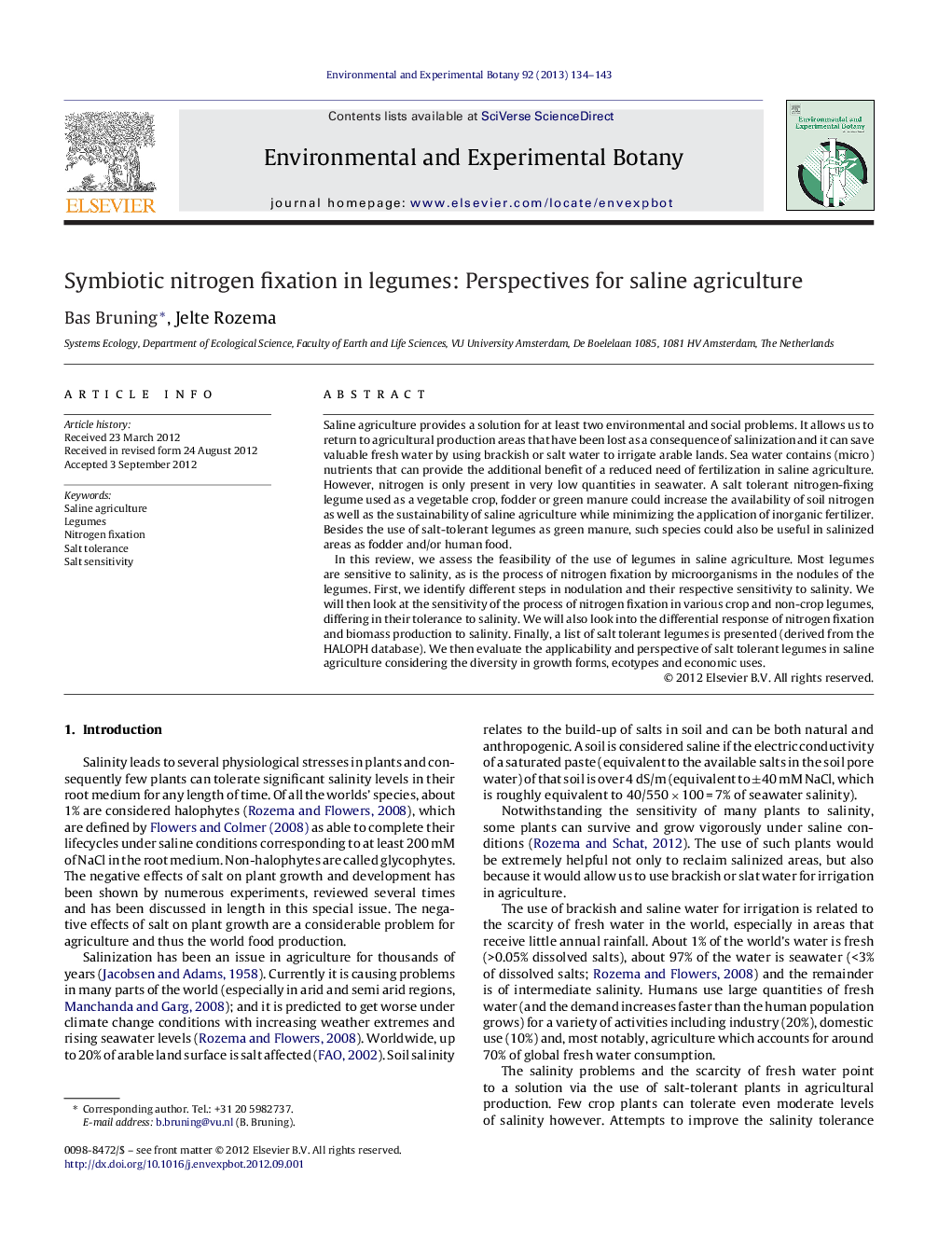| کد مقاله | کد نشریه | سال انتشار | مقاله انگلیسی | نسخه تمام متن |
|---|---|---|---|---|
| 4554513 | 1628085 | 2013 | 10 صفحه PDF | دانلود رایگان |

Saline agriculture provides a solution for at least two environmental and social problems. It allows us to return to agricultural production areas that have been lost as a consequence of salinization and it can save valuable fresh water by using brackish or salt water to irrigate arable lands. Sea water contains (micro) nutrients that can provide the additional benefit of a reduced need of fertilization in saline agriculture. However, nitrogen is only present in very low quantities in seawater. A salt tolerant nitrogen-fixing legume used as a vegetable crop, fodder or green manure could increase the availability of soil nitrogen as well as the sustainability of saline agriculture while minimizing the application of inorganic fertilizer. Besides the use of salt-tolerant legumes as green manure, such species could also be useful in salinized areas as fodder and/or human food.In this review, we assess the feasibility of the use of legumes in saline agriculture. Most legumes are sensitive to salinity, as is the process of nitrogen fixation by microorganisms in the nodules of the legumes. First, we identify different steps in nodulation and their respective sensitivity to salinity. We will then look at the sensitivity of the process of nitrogen fixation in various crop and non-crop legumes, differing in their tolerance to salinity. We will also look into the differential response of nitrogen fixation and biomass production to salinity. Finally, a list of salt tolerant legumes is presented (derived from the HALOPH database). We then evaluate the applicability and perspective of salt tolerant legumes in saline agriculture considering the diversity in growth forms, ecotypes and economic uses.
► Salt tolerance in legumes is generally limited compared to halophytes but some are moderately tolerant.
► The different steps in nodule formation and nodule functioning are all affected by salinity.
► Growth parameters as well as nitrogen fixation rate are negatively affected by 100 mM NaCl (20% of seawater ∼ 10 dS/m) salinity in most legumes.
► The plants overall tolerance and the tolerance of nitrogen fixation to salinity are generally positively correlated.
Journal: Environmental and Experimental Botany - Volume 92, August 2013, Pages 134–143